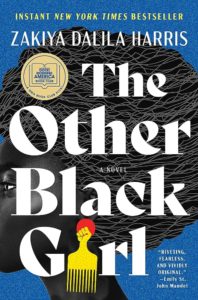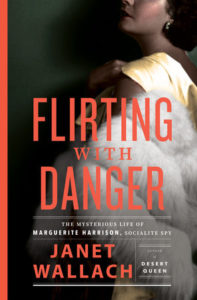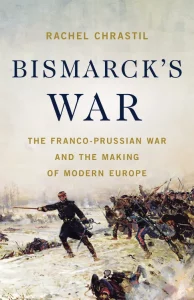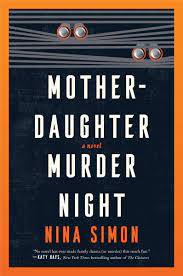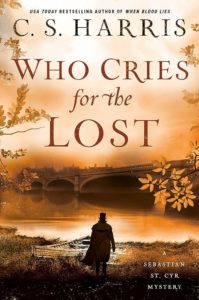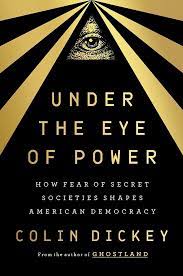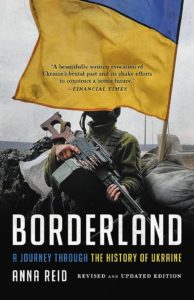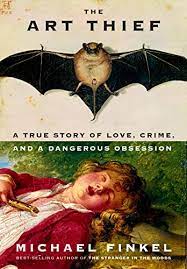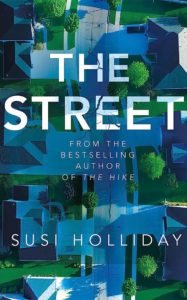 Lev Raphael
Lev Raphael
Brilliant, Scary Satire
As a book reviewer, you can often feel like you’re on a high-speed train missing all the terrific possible stops along your route. People wherever you go mention books that you somehow never got to read read or read about because you’re too damned busy reading and reviewing other books.
Back when I worked for half a dozen different publications, I remember weeks where I was reviewing three or more books on deadline and either reading or writing with no break whatsoever. Okay, I did eat and go to the john. And maybe hit the gym, but in my head I was always thinking about the next review–and the one after that–and the one after that.
So I confess I missed the bravos for The Other Black Girl, but I am here to tell you that it is a laugh-out-loud, gorgeously written, and effing brilliant satire of the publishing world–and much more. I love this powerful novel and I envy the author her style, her humor, her satire, her poise. She is stone cold amazing. And for those readers who think MFA programs turn out cookie-cutter writers, guess again. She is an original.
The set-up is great: Nella, whose name recalls the Harlem Renaissance novelist Nella Larsen, is the only Black editorial assistant in the prestigious Wagner publishing house. A publisher whose mail room staff is all people of color but whose editorial, art, and publicity staff are all uniformly white, many of them quite privileged. Nella’s little cubicle is a lonely place, and “blacksplaining” cultural realities and events to her White colleagues often works her last nerve.
She’s not a legacy hire and though her family was comfortable, they weren’t wealthy and that helps isolate her even more–at least in her own mind. She’s also not happy being stuck at a low pay grade, though she loves the work, most of the time. Enter Hazel, a much hipper Black editorial assistant with whom she feels she can (and should) bond, but things quickly get weird, competitive, and creepy in the extreme.
The author worked at Knopf for three years so she has an inside track on creating a workplace filled with kooks and quirks, competition, hypocrisy and back stabbing. Like so many organizations today, Wagner makes feeble attempts to embrace diversity and the author’s wit here as elsewhere is stiletto-sharp. The satire is never laid on too thick, however, and Nella is a wise, weary hero to admire and root for.
And so you feel you’re deep in a novel about workplace competition, Black solidarity and White cluelessness/condescension–until the book expands way beyond what you might expect when we learn the meaning of the title. That’s when the book plunges deep into an alternate, hair-raising reality that’s a spoof conspiracy theorizing. The register becomes fantasy-horror and it’s a dazzling switch. I was glad that I put everything aside this weekend to read the book straight through. The Other Black Girl is a knockout debut.
Lev Raphael, author, editor, and teacher, is a prize-winning publishing veteran. His 27 books span genres from memoir to mystery.
A Vivid Spy Story
This is the biography of a wildly improbable life: born into wealth and privilege, Margaret Harrison changed careers from society news reporter to spy. That’s right, fluent in German, she was a spy for American military intelligence in post-WWI Germany. Harrison was tasked with taking the mood of the country from top to bottom. She did so, moving through a country filled with violence and practically dodging bullets in Berlin as various factions fought each other for control.
When she was assigned to discover what was really going on in Bolshevik Russia, Harrison learned Russian and sneaked into that country of vast convulsions, which was at war with Poland. She had no permission, but she had charm and wit and could think fast. Harrison was totally clear-headed about the risk of crossing over from Poland:
She was aware that once she reached the Russian side, she would have no one to turn to for help: no American diplomats had stayed in the country, no foreign embassies remained to represent her; she had no way to send a message out, and no one she knew to receive a message inside. She would be at the mercy of a dangerous adversary.
Hobnobbing with the literati and enjoying Moscow’s cultural richness amid the shortages of food and just about everything else didn’t last. She was forced to spy for the Cheka, the secret police–but that didn’t last, either. The book tips over into a sort of horror story when she’s arrested and imprisoned for well over a year in shocking, grotesque conditions that severely undermined her health–but didn’t diminish her spirit.
Multilingual, she was praised by spymasters for the best intelligence from Russia any agent was supplying, and as a media sensation, Harrison became a successful lecturer about Russian reality and her prison experiences. She left out being a double agent. Craving “hardships and adventures,” she went on to get more than her share as a reporter and occasional spy in Japan, Siberia, China, Korea, and Mongolia. Her energy is almost exhausting to contemplate, and the most astonishing episodes are worthy of an Indiana Jones reboot: a film she helped finance and starred in was set in an extremely remote part of Persia.
Flirting with Danger is filled with a blizzard of famous figures: politicians, artists, and writers from Winston Churchill to Emma Goldman and Maxim Gorky. The author is a supremely confidant storyteller, but she deserved a careful copyeditor who, for instance, was aware that German nouns are capitalized and knew that Germany was not “under authoritarian rule” in 1924. She also needed an editor who could have reined in the profusion of adjectives, many over-long sentences, excessive attention to meals, and florid phrases like this one: “her eyes danced like clouds in a blazing sky.”
It’s also disturbing that the author twice labels gays and lesbians in 1919 Berlin as “sinister” when this was a time of unprecedented freedom and openness for that community. The portrait of Berlin seems skewed, perhaps reflecting Harrison’s own apparent prudishness, and readers will find a much more nuanced assessment of the city right after WWI in Claire McKay’s Life and Death in Berlin.
All the same, Flirting with Danger is a memorable book about an unforgettable woman. ★★★
Lev Raphael has reviewed books for the Detroit Free Press, The Washington Post and other publications. Biography is one of his favorite genres and he recently reviewed The Art Thief.
A New Kind of War
Manipulated into declaring war on Prussia in 1870, ailing and criminally indecisive Napoleon III of France was quickly defeated and captured on the battlefield in a disastrous few months that led to the final unification of northern and southern Germany and the creation of Imperial Germany.
The author tells this familiar story with verve, relying on diaries and letters from ordinary soldiers to military commanders and royalty. Enthusiasm was high on both sides but the Germans clearly outdid the French military in well-defined battle plans and overall strategy. Just as important, their leaders were in good health while Napoleon III was ill, uncertain, and issued last-minute changes that were confusing.
The French lines of communication were murky and French retreats were mostly chaotic while German advances were far better organized. The French had better rifles and an early version of the machine gun, but the German armies had bigger and deadlier cannons. Both sides used railroads to move troops and supplies, but the Prussian did so far more efficiently and their generals had recent experience fighting the Danes and the Austrians.
Though the term “shell shock” wasn’t invented yet, it’s clear that troops on both sides were traumatized by the piled-up bodies of dead and wounded in numbers that had never been seen before. Likewise, no city had ever been shelled so constantly and repeatedly as Strasbourg which at one point was hit every twenty seconds by powerful explosives, and the emotional toll on its citizens was severe. And the random shelling of Paris seems a presage of the war in Ukraine.
There are many fascinating pages on the varied reactions around France to Napoleon III’s surrender and the fate of his mammoth army. And the tales of extortion and atrocities committed by troops from various German states in response to the slightest resistance are shocking. The author has an eye for surprising details, like the fact that there was water under the Paris Opera, discovered after drilling through the foundation, and the author claim helped inspire The Phantom of the Opera novel by Gaston Leroux.
As engaging as it is, the book could have been more reader-friendly. Maps are gathered at the front so you need to keep paging back to refer to them when following the specific movements of troops in battle–or trying to follow them. None of the maps show the placement and progress of actual armies as you’d expect from a book so keenly focused on a war.
The chapter on the Prussian sieges of Metz and Strasbourg badly needed plans of the complex fortifications. Just as frustrating, the book lacks a map of the French départments. You have to go to Google to figure out where there is partisan activity, for instance, when the Germans besiege Paris. Likewise when the author talks about where people flee to avoid the German and where exactly German atrocities take place. There are many handsome period illustrations, but their labels are at the back of the book, so if you don’t want to interrupt your reading, you have to guess what they refer to.
Nevertheless, this is a thorough and illuminating study of a war that created a gigantic pivot in world history. ★★★
Lev Raphael is the author of 27 books in genres from memoir to mystery and his reviews have appeared in The Detroit Free Press, The Washington post, The Huffington Post and Salon.
Family Drama and Mystery
Two very different families are central to the plot in Nina Simon’s debut mystery Mother-Daughter Murder Night, and given the recent fires in California, it’s not surprising that fire is just as pivotal.
Fire, and fiery women, even if they’re cool on the outside. Lana Rubicon is a super-stylish “diamond-hard” realtor who’s been forced out of work and has retreated from chic, high-energy LA to a small town up the coast. She moves in with her somewhat estranged daughter Beth needing support during cancer treatment. Will this highly critical woman work Beth’s last nerve? And where does her granddaughter fit into the family geometry?
The other family’s toughest member is wealthy Diana Whiteacre whose first husband was a young duke and whose ailing father is a local landowner. His death pits her and Martin, her Maserati-driving brother, against each other since they have very different dreams for the ranch that they’ll inherit. Martin’s a bit too smooth for his own good.
The men in this novel are either pushy-verging-on-aggressive, or less than competent in contrast to the deeply resourceful women of all ages. And that’s just fine, since Lana’s barbed view of men and power permeates the story and she offers a steady supply of wit and hard-earned wisdom.
There are some minor mysteries tied into the main one that involves two murders and those aren’t too hard to unravel (and neither is the murder weapon), but Simon does a good job of shifting suspicion back and forth among various characters as Lana, Beth and Jack become embroiled in solving the crimes. At great risk to themselves, of course.
Simon’s people are real, her prose is taut especially when describing pain and physical peril, and she excels at making you feel transported to places you’ve never seen. Here’s Lana gazing out a window late at night:
The moon was full above the slough, and the whole world looked flattened out in grayscale wispy clouds, grainy fields, fast-moving current. Glints of moonlight bounced off the water where harbor seals surfaced, hunting crabs along the mud flat that edged the slice of beach behind the house.
Simon cleverly gave Lana a very rare American surname, Rubicon, to recall the famous decision Julius Caesar made when he crossed the river of that name in 49 B.C.E, breaking Roman law to bring troops into Italy for the first time. The characters in Mother-Daughter Murder Night keep crossing one kind of boundary or another and that makes for an entertaining read.
Simon’s afterword adds another layer to everything in the book, since she wrote the novel when her mother developed lung cancer and they both needed distraction and a project. As such, it’s a powerful gift. ★★★★
Lev Raphael is the former crime fiction reviewer for The Detroit Free Press and author of ten Nick Hoffman mysteries set in the hothouse world of academia.
The Regency Jason Bourne is Back
C.S. Harris is a fantastic novelist. Her characters are richly observed, her dialogue is evocative, her plots are exceedingly well wrought, and she excels at atmosphere: you see, feel, and smell every scene in a kind of 3-D. Reading one of her books is immersive, it’s time travel, it’s magic.
Harris’s understanding of the Regency era is remarkable for its depth and range, and she is one of the few authors whose series I’ve stuck with over time because she isn’t disappointing.
Her glamorous, debonair nobleman is Sebastian St. Cyr, Viscount Devlin. He is gifted with “hearing and night vision” that are “unusually acute” and they help him investigate murders–and sometimes outwit stalkers. He’s also a master of disguise, but he’s no Marvel superhero. In fact, Devlin starts off the 18th book of the series with a profound and troubling disadvantage: a painful leg injury that’s likely to keep this ex-soldier from crossing the Channel to Belgium where “the armies of Europe were massing for what would in all likelihood be one of the most decisive battles in history.”
He badly wants to join former comrades, but that isn’t on the cards, despite the looming menace abroad. Napoleon has escaped Elba and been welcomed back to power in France with jubilation. The exiled emperor’s shadow has fallen again over Europe–and it has surprising power over Devlin as he becomes entangled in a twisted tale of mutilated corpses, espionage, secrets of seduction and betrayal, witchcraft and werewolves.
Suspects abound and they could well be French assassins from any number of rival factions. He himself is attacked and warned off in classic PI style by a huge thug and an oily villain. As you’d expect, he acquits himself well; even with his injury, St. Cyr is not an easy mark.
One of the best aspects of this series is its social range. Between St. Cyr and his amateur journalist wife Hero, we meet people of all ranks in Regency England: actors, fortune tellers, politicians, aristocrats, thieves, men of the law, servants, governesses, thugs, inn keepers, soldiers, beggars, ferrymen, sailors, merchants, tradesman, vagabonds and many more. We travel through a London that has disappeared like Atlantis, with Harris as our guide.
Built with short, punchy chapters, this book has it all: mystery, scenery, adultery, luxury, poverty, cruelty, zealotry, hypocrisy, bravery. And the series consistently has some of the most beautiful book covers around.
Lev Raphael is the former crime fiction reviewer for The Detroit Free Press and has reviewed books at Salon, The Washington Post, Huffington Post and other publications.
Paranoid America Revealed
It’s comforting to think of McCarthyism or the Salem Witch Trials as exceptions, as bursts of madness and vindictive cruelty in an otherwise sane country. But they’re not exceptions, they’re par for the course in the United States where fear of conspiratorial plots is the “great unseen engine of American history.” That’s the verdict of cultural historian Colin Dickey.
In a memorable, chilling phrase, the author of Under the Eye of Power throws down the gauntlet with the opening line of his new book: “The United States was born in paranoia.”
Dickey goes on to explain that there’s nothing hyperbolic about this statement. In briskly narrated and sometimes alarming chapters, what follows is a parade of secret, secretive, or “foreign” groups that have been seen as targeting America for a hostile takeover of one kind or another. All these groups have supposedly sought total control, and the unreasoned fear of their machinations has consistently created “moral panic.”
The culprits include real and quasi-imaginary groups: Freemasons, the French, Catholic immigrants, the Molly McGuires, Mystic-Red, Abolitionists, labor unionists, The Illuminati, slave owners, Jews, anarchists and socialists.
All of those groups have been viewed as malign, destructive, nefarious and subversive, deviously operating behind the scenes as puppet masters and saboteurs of American values and independence. And so there’s been a drumbeat of fear, outrage and violence throughout this country’s history going back to the time of the Revolution.
One of the many surprises in this ugly catalogue of craziness is the fact that even George Washington was prone to see the unseen hand of conspiracy behind contemporary events. Ditto Samuel Adams, as Stacy Schiff shows in her splendid biography of Samuel Adams–he thought that the English were definitely conspiring to “enslave” the colonists and deprive them of their liberties.
The author brings to our attention riots and massacres that deserve more attention, but does the second incarnation of KKK really belong here when it was so ostentatiously public in its racism and violence?
The book definitely needed a firmer editorial hand. Dickey keeps explaining in different ways that belief in secret groups with inordinate power supplies a simple explanation to complex and frightening realities. Yes, we got that the first time, and it’s not an especially original observation.
The author has a degree in comparative literature , so it’s curious that he doesn’t mention the influence of Matthew Gregory Lewis’s classic tale of priestly depravity The Monk when he discusses wild, anti-Catholic novels featuring depraved monks and nuns that were best-sellers in the 1840s.
The book is colorful and often shocking, but even at only 328 pages of text seems too long for its thesis. And given that Dickey ably pinpoints our continued forgetfulness about these episodes, his book will likely fade away too. ★★★
Lev Raphael is the author of twenty-seven books in genres from memoir to mystery and has seen his work appear in fifteen languages. He has reviewed books for The Washington Post, The Detroit Free Press and other publications.
Ukraine Then & Now
If you want to understand the conflict in Ukraine and go behind the headlines, there’s no better place to start than Anna Reid’s Borderland: A Journey Through the History of Ukraine. Deeply researched, elegantly written, totally enthralling, the book explores the history of Ukraine back to the Vikings and how Ukraine and Russia have followed completely different paths.
Unlike Russia, which became an autocratic empire, Ukraine has been ruled and misruled by Poland, Lithuania, Austria-Hungary and of course Russia. A key to the current slaughter of Ukrainians and the seizure of vast swathes of territory–as well as what sounds like crazy rhetoric on Russian talk shows–is a profound Russian delusion about this country that hasn’t been independent very long but has an undeniable historic existence, culture, and language. Reid notes that historically Russians have regarded
Ukrainians as really just a subspecies of Russian…Any differences that did demonstrably exist between them were the artificial work of perfidious, Popish Poles–replaced in today’s Russian imagination by the meddling West in general. Rather than attacking Ukrainians and Ukrainian-ness as inferior, therefore, Russians deny their existence. Ukrainians are a “non-historical nation,” the Ukrainian language a joke dialect, Ukraine itself an “Atlantis–a legend dreamed up by Kiev intellectuals”…The very closeness of Ukrainian and Russian culture, the very subtlety of the differences between them, is an irritation.
That was written in the 90s; now the irritation appears to have turned to seething hatred.
Blending history, personal exploration, and interviews, the book is unique because it is divided into two parts: the first was published in 1997 90s when a democratizing Russia under Yeltsin seemed highly unlikely to attack its neighbor. The second, of course, was written after Putin launched his “special military operation” at a time when Russia seems like a fascist state to many international analysts–and certainly to Ukrainians who have experienced fascism under the Nazis.
Reid doesn’t pull any punches exploring Ukrainian antisemitism and pogroms or the country’s lack of readiness to face up to the truth the way Germany has done about the Holocaust. Nor does she whitewash past governmental and cultural corruption. Reid is especially adroit at discussing how Ukrainian nationalism has been growing stronger and investigating the role of the Ukrainian language in a country where many people have been bilingual and Ukrainians have Russian relatives and marriages are often “mixed.”
If you’ve read Bloodlands by Timothy Snyder, Reid’s book is a perfect companion piece, vitally important work that has been superbly edited and updated. ★★★★★
Lev Raphael is the author of 27 books in genres from memoir to mystery and his work has appeared in over a dozen languages. He has reviewed books for The Detroit Free Press, The Washington Post and a handful of public radio stations.
The Amazing Art Thief
The Art Thief is really a romance, but not so much the tale of Stéphane Breitwieser and the girlfriend who helped him steal art worth two billion dollars.
No, it’s a romance about the profound attraction of beauty and how it can be even stronger than the love for another person–and can make someone take wildly unimaginable risks.
Starting in the 90s, Breitwieser’s eight-year haul in a handful of European countries broke down to two hundred heists that yielded three hundred works. And he hid all these thefts in his mother’s attic as if it were the treasure-filled vault in David Baldacci’s Absolute Power.
Stéphane grew up in a haut bourgeois, wealthy French home surrounded by beauty and turned into a teen who fell in love time after time with paintings and countless objets d’art: late Renaissance and early Baroque ceramics, silver pieces, ivory statuettes, paintings on copper and paintings in oil, antique weapons and helmets and anything else that spoke to him. He was especially fond of work from Northern Europe in that period, and unlike the “typical” art thief, he was careful not to damage what he stole.
As the author makes clear, Breitwieser truly was no ordinary thief: he saw himself as “liberating” these pieces from their imprisonment in museums and galleries. And he wanted something more than money, since he didn’t funnel the works to fences. He craved an intimate, in-person relationship with everything he stole. The daring daytime thefts weren’t what turned him on, it was the glorious art and craftsmanship itself.
Remember the thief played by Pierce Brosnan in The Thomas Crowne Affair and Steve McQueen before him? Both of them seem like mere shoplifters compared to Breitwieser.
Finkel is a masterful story-teller who makes this unbelievable story come vividly alive: it races forward, immediate and electric. You really feel at times that you’re watching an on-screen thriller that involves a thief and the art detectives who gradually close in on him. The courtroom drama is topnotch and Finkel’s prose is consistently lean, colorful, gripping. His use of many sources, including interviews with Breitwieser, is exemplary. He’s also careful in sifting various theories as to why Stéphane was the mother of all art thieves, because a variety of mental health professions had a variety of explanations.
Take this book on a plane ride, to the beach, take it everywhere and anywhere–it is a work of beauty itself with spectacular and stunning illustrations, an unforgettable story that’s ultimately about one of our deepest and most chaotic feelings: desire. ★★★★★
Lev Raphael was a frequent visitor to many New York museums when he grew up there and recently published a piece about one of his favorite pieces, Canova’s Perseus at the Metropolitan Museum of Art.
“The Street” is Too Easy to Figure Out
It’s no surprise that Anna and Peter have been moved in The Street from London to a brand-new, upscale, little development in Scotland because they’re in witness protection. Anna’s experiencing high anxiety, she and Peter are very much at odds, and their new home is too meticulously furnished and equipped. The street of eight houses itself is on the creepy side: “perfect white cubes with their perfect gardens.”
Tension mounts when Anna starts meeting the neighbors, all of whom live in identical homes whose doorbells play the same annoying tune. You start to wonder: Are they cult members? Aliens? Spies? Is this some weird kind of prison? The enclave is gated and there are security cameras, okay, but why does Anna have a very intrusive phone app?
Something is definitely amiss on this street, because no matter who Anna talks to after her boozy first night (more about that below), she experiences “an odd sensation, a shift in the atmosphere that seemed to happen every time she spoke to one of the residents.”
Their next-door neighbors seem like fun, drink a lot, and enjoy Indian food just like Anna and Peter, and the four of them have a hard-drinking, hilarious night before the couple have settled in (or tried to). But the day after, those neighbors have disappeared and their house is totally empty. Everyone on the street denies they were even there. . .
It’s an intriguing hook if you’re going to be hooked.
As the book progresses, we learn through flashback chapters more about how the couple came to be ripped out of their London lives and planted in Scotland, and why they might be in profound danger. She’s a writer and he’s a carpenter but each of them is far more complex than they first appear to be, and they have some ugly stuff to hide from the world and each other.
Holliday writes keenly about fear, paranoia, and how married couples can work each other’s last nerve and not have any idea who they’re really married to. She builds tension skillfully and keeps you actively guessing as to what’s going to happen next.
All the same, the book has a gigantic sinkhole of a problem: the explanation for all the strange behavior on Anna’s street was so obvious early on that you may wonder why Anna couldn’t figure it out herself. After all, she’s a crime novelist. The time changes throughout the book complicate the storyline, but they don’t camouflage the excruciatingly simple solution that’s apparent before the book truly takes off. This is a mystery that’s ultimately not mysterious enough. ★★
Lev Raphael is the former crime fiction reviewer at The Detroit Free Press.


